#Eusebius of Caesarea
Explore tagged Tumblr posts
Text
2 Books by Eusebius of Caesarea (275-339)
592J. Eusebius of Cæsarea (275-339) The Avncient Ecclesiasticall Histories of the First Six Hvndred Yeares After Christ, written in the Greeke tongue by three learned Historiographers, Eusebius, Socrates, and Euagrius. Evsebivs Pamphilvs Bishop of Cæsarea in Palæstina uurote 10. bookes. Socrates Scholasticvs of Constantinople uurote 7. bookes. Evagrivs Scholasticvs of Antioch uurote 6. bookes.…
1 note
·
View note
Text
Early Christians had a complete Bible by the 4th century.
But that’s not the only thing they were reading to deepen their faith.
In the early Church, there were a lot of great books being passed around.🧵
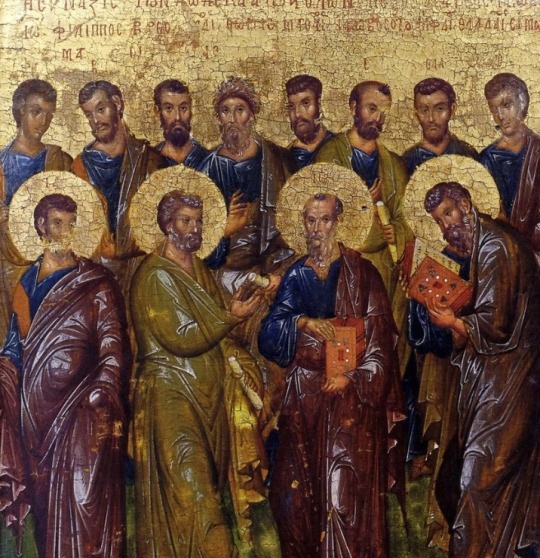
The Didache, Anonymous, 1st century
The Didache is a brief discourse that contains moral and ritualistic teachings — a handbook for a Christian life.
It’s speculated the apostles wrote it, and contains the formulas for baptism and eucharist that are still used today.
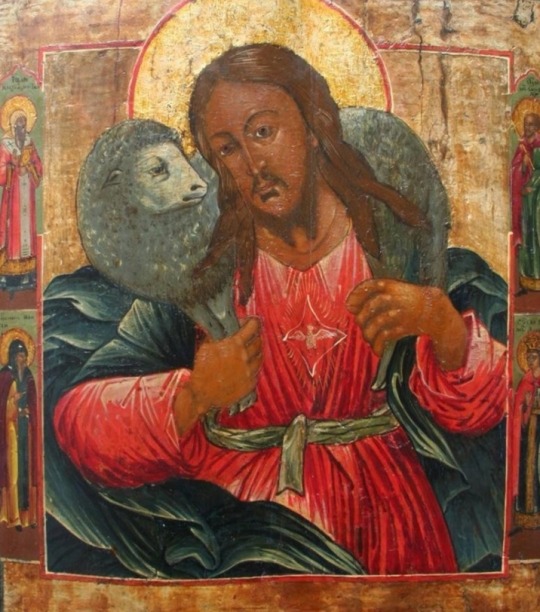
The Shepherd of Hermas, Hermas, 2nd century
St. Iranaeus considered it to be canonical scripture.
Though it missed the cut, it’s a fascinating work that centers around the life of a former slave who is given mystical visions and parables informing him how to live a faithful life.
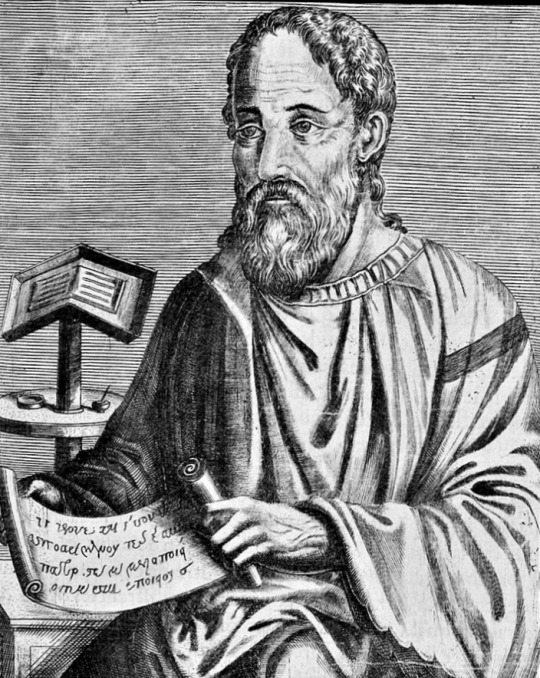
Church History, Eusebius, 4th century
Eusebius had access to one of the largest sources of knowledge in the ancient world: Library of Caesarea.
This allowed him to piece together this contentious history of the church through letters, martyrdom accounts, and lists of bishops.
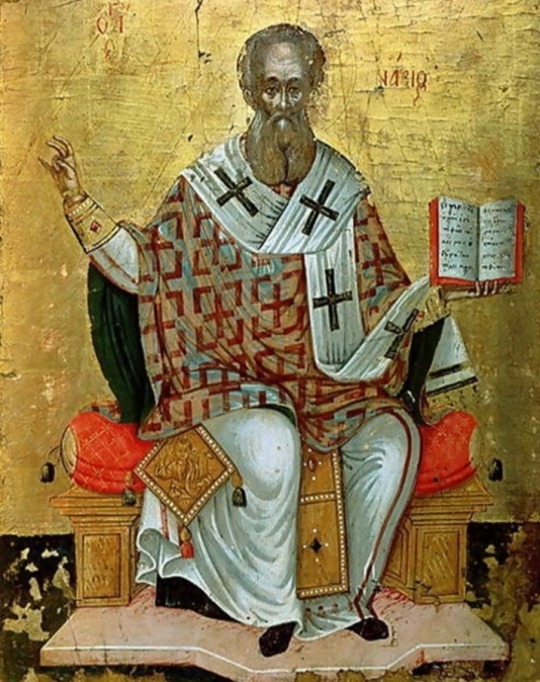
On the Incarnation, Athanasius, 4th century
C.S. Lewis said of it:
“When I first opened On the Incarnation, I soon discovered…that I was reading a masterpiece.“
Here, Athanasius presents the incarnation as a solution to man's fallen nature, or what he calls the “divine dilemma."
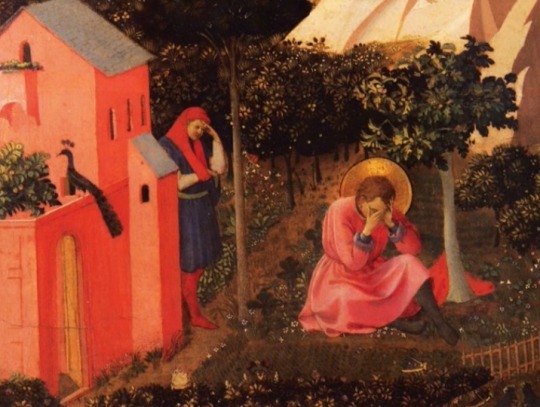
Confessions, Augustine, 5th century
Augustine's masterpiece is an autobiography where he ponders his troubled youth and eventual conversion to Christianity as he traversed the Roman empire.
It’s a story of the struggle against sin and the metanoia of a future saint.

The City of God, Augustine, 5th century
An intellectual tour de force, The City of God depicts the ultimate struggle of the human condition — a war where all must make a choice between the “earthly city” and the “city of God.”

Sayings of the Desert Fathers, various authors, 5th century
Ancient wisdom from desert hermits.
It’s a collection of wisdom stories and maxims from the desert fathers, who were some of the earliest hermits and ascetics.
Early monks looked to these stories for spiritual guidance.
#Early Christians#Bible#books#The Didache#The Shepherd of Hermas#St. Iranaeus#canonical scripture#Church History#Eusebius#Library of Caesarea#On the Incarnation#Athanasius#C.S. Lewis#Confessions#Augustine#The City of God#Sayings of the Desert Fathers#desert hermits#ancient wisdom#desert fathers
2 notes
·
View notes
Photo

The Bar-Kochba Revolt
The Bar Kochba Revolt (132–136 CE) was the third and final war between the Jewish people and the Roman Empire. It followed a long period of tension and violence, marked by the first Jewish uprising of 66-70 CE, which ended with the destruction of the Second Temple, and the Kitos War (115-117 CE). In many ways, the Bar Kochba Revolt differed markedly from its predecessors. For the first time, the Jews presented a united front against Roman forces and fought underneath a single charismatic leader, the eponymous Simon Bar Kochba (also given as Shimon Bar-Cochba, Bar Kokhba, Ben-Cozba, Cosiba or Coziba). It was marked as well by strong religious passions, with many apparently believing that Bar Kochba was the promised messiah who would lead the Jewish people to final victory against their enemies.
In its initial stages, the revolt was surprisingly successful and may have resulted in the destruction of an entire Roman legion. It is possible that the rebels regained control of the city of Jerusalem, and they must have held large portions of ancient Judea. The Romans, however, regrouped and adopted a scorched-earth strategy that ultimately extirpated the rebels and laid waste to the country. The war shattered Judean society and led to far-reaching demographic and political changes, with the majority of the Jewish population of the province killed, enslaved, or exiled, and their national hopes definitively crushed. The Jewish people would not regain their political independence until the Zionist era and the establishment of the State of Israel in 1948 CE.
The Problem of Sources
Unlike the revolt of 66 CE, the historical sources on the Bar Kochba Revolt are scanty at best. The war had no chronicler such as Josephus Flavius, at least none whose work has survived. The primary non-Jewish sources are an epitome of Cassius Dio's Roman History and a handful of lines by the ecclesiastical historian Eusebius, the bishop of Caesarea. The war is also briefly mentioned by the Church father Jerome. While by no means comprehensive, these sources do provide several important details.
The Jewish sources are not per se historical and, while also scanty, are found throughout the rabbinical literature of the period and after, in particular, in the Jerusalem and Babylonian Talmuds. While they are often clearly legendary and unreliable in nature, they do paint a general picture of the Jewish experience of the war and its aftermath.
In addition, several important archaeological finds have shed light on certain aspects of the revolt. Coins minted while Judea was temporarily freed from Roman rule indicate the existence of an independent Jewish state for a brief period. In the 1960s CE, a cave in the Judean desert was found that likely once housed refugees from the revolt. Called the “Cave of Letters,” it contained a cache of documents that included several letters from Bar Kochba himself, which shed unprecedented light on his personality and style of rule.
Continue reading...
53 notes
·
View notes
Text
ISLAMIST rebels have taken Damascus and the regime of Bashar al-Assad has fallen. The world rejoices and there are street celebrations by exiled Syrians in the major cities of the West. Politicians including Sir Keir Starmer welcome the fall of Assad’s ‘barbaric regime’ as a ‘very good thing for the Syrian people’.
And the Christians of Syria flee.
Since the Syrian civil war broke out in 2011, 90 per cent of Christians have abandoned Aleppo, the country’s second largest city. Will the remaining 10 per cent remain to welcome their jihadi ‘liberators’? What centuries of Islamic oppression was unable to do, the civil war managed and the overthrow of the Assad regime will probably complete: the destruction of one of the oldest Christian communities in the world.
It was on the road to Damascus that Saul, the persecutor of Christians, met the risen Christ and became Paul, the greatest of missionaries and theologians who wrote much of the New Testament. It was in the then Syrian city of Antioch (present day Antakya, in Turkey) that followers of The Way were first called Christians. Syria produced many of the saints and fathers of the early church such as Ephrem the Syrian and Eusebius of Caesarea. Two thousand years of Christianity in Syria may soon be coming to an end.
The Catholic Archbishop of Aleppo has described this as the end of Christianity’s presence in the city. ‘We are really tired,’ he said. ‘We are really exhausted, and we are also finished, in every sense.’ Speaking of the armed groups who have taken over he said, ‘The Christians of Aleppo will be convinced that they cannot stay. That it is over for them. In Aleppo they are trying to bring about the end of the rich, magnificent and unique history of the Christians of Aleppo.’
11 notes
·
View notes
Photo

#WordyWednesday
Manicule: A term for the little hands drawn in the margins of many medieval and early modern books. The main feature of a manicule is its index finger, which is often cartoonishly long, and points at specific passages in the text. Most manicules were drawn by readers to note things but they were occasionally also added by printers. Each reader would draw a manicule in their own idiosyncratic way, sometimes lavishing great detail on anatomical detail and a sleeve cuff at the hand’s wrist and sometimes simply drawing a few quick round strokes to suggest other fingers.
Image: Eusebius, of Caesarea, Bishop of Caesarea, approximately 260-approximately 340. De evangelica praeparatione. Latin. Treviso: Michele Manzolo, 1480. BR65.E75 D448 1480
(via Manicule — Ostrocon · Rare Books: A Glossary · Special Collections and Archives)
#wordy wednesday#wordywednesday#john henry#special collections#specialcollections#rare books#rarebooks#bookhistory
33 notes
·
View notes
Text
Saint Hippolytus of Rome
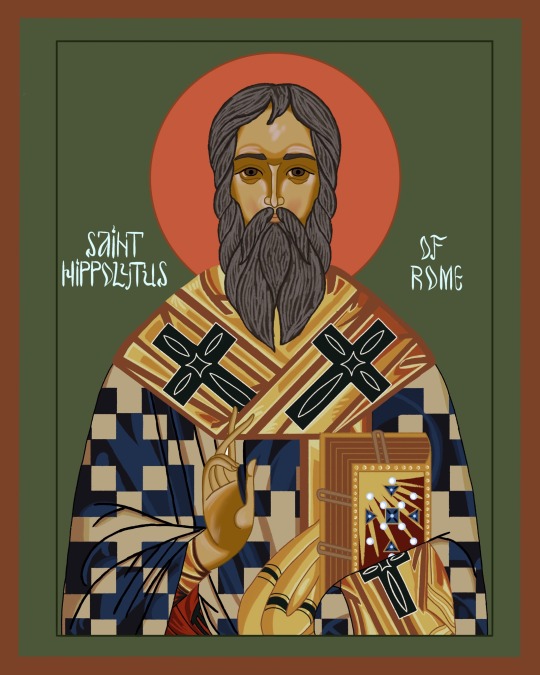
The hieromartyr Hippolytus of Rome was a priest and an ecclesiastical writer of the third century. He is considered to have been antipope of the Church of Rome from about 217 to 235. He was among the most important Christian theologians of the third century, and a saint. His feast day is January 30.
T
Life
The early life of Hippolytus is unknown. He was born about the year 170 and lived in Rome when young. Greek was his native tongue. He is believed to have been a disciple of Irenaeus of Lyons and to have met Origen. From the details of his work, Philosophoumena Hippolytus apparently was in Rome during the time Victor was the bishop of Rome. At the beginning of the third century he was a priest noted for his learning, eloquence, zeal, and moral earnestness. He was also noted to be a bishop of an unspecified city by Eusebius of Caesarea and Jerome and by the poet Prudentius as bishop of Portus, a port for Rome.
The Philosophoumena, that is a part of his larger work "Refutation of All Heresies", shows that he dissented from the compassionate views of Bps. Zephyrinus, whom he considered to be a weak man "unskilled the church's rule", and Callistus I of Rome concerning the reception of backsliders and heretics who had repented. In the "Refutation of All Heresies" Hippolytus set out to refute the doctrines of the Gnostics and condemn heretics by showing that their views were taken from pagan philosophy and oriental theosophy.
Hippolytus also came into conflict with the opinions of the bishops of Rome on christological issues of the day to such an extant that came to allow himself to be elected a rival bishop of Rome, the first antipope
Under the persecutions of emperor Maximinus Thrax Hippolytus was exiled to Sardinia in 235 where he died, reportedly a martyr. His body was returned to Rome and interred in a cemetery on the Via Tiburtina. By about 255, he was considered a martyred priest by the Church, indicating that he had been reconciled with the Church and not considered a schismatic.
Taken from Orthodox Wiki
#eastern orthodox#orthodox#byzantine#orthodoxy#eastern catholic#christianity#icon#iconography#byzantine icon#christian iconography#Hippolytus Of Rome#St. Hippolytus of Rome#Saint Hippolytus of Rome#Catholic Saint#Orthodox Saint#Greek Orthodox#Russian Orthodox#Roman Catholic#Catholic Icon#Church Father#Eastern Orthodox Church#Russian orthodox icon#great saint#Orthodox Church#early church#patristic#Hippolytus#Orthodox iconography#Eastern orthodox icon#Eastern Orthodox iconography
9 notes
·
View notes
Text
Holidays 3.5
Holidays
Act Goofy Day
Alimony Equality Day
Anthass Day (Kerala, Fans of Indian actor Mukesh)
Arivee de l’Evangile (Gospel Day; French Polynesia)
Babysitter Safety Day
Boston Massacre Day (Massachusetts)
Brain Injury Awareness Day
Charity Day (Iran)
Children’s Day (New Zealand)
Cinco de Marcho
Cincomarzada
Crispus Attucks Day
Custom Chief’s Day (Vanuatu)
Day of Physical Culture and Women in Engineering & Technology begins
Dr. Doolittle Day
Erotic World Book Day
Excited Insects (Chinese Farmer’s Calendar)
Goat Day (French Republic)
Green Hellebore Day
Hula Hoop Day
International CVS Awareness Day
International Day for Disarmament & Non-Proliferation Awareness (UN)
International Day of Energy Efficiency
International Day of the Seal
Judiciary Employee Day (Kyrgyzstan)
Katyn Massacre Day
Learn from Lei Feng Day (China)
Madison Beer Day
Mother-in-Law's Day
Multiple Personalities Day
National Dissociative Identity Disorder Day
National Emetophobia Awareness Day (UK)
National Industrial Design Day
National Journalist Day (Thailand)
National Kalpak Day (a.k.a. Hat Day; Kyrgyzstan)
National MAR5 Day
National Potty Dance Day
National R&B Music Day
National Scott Day
National Tree Planting Day (Iran)
Panchayati Raj Divas (Odisha, India)
Reel Film Day
Running of the Reindeer (Alaska)
Say Hi to Mom Day
Scouts’ Day (Taiwan)
Spread the Word to End the Word Day
Stapler Day
Stop the Clocks Day
Temperance Day
305 Day
World Sustainable Energy Day
Food & Drink Celebrations
National Absinthe Day
National Cheese Doodle Day
National Mobile Food Vendors Day
National Pasty Day (UK)
National Poutine Day
Ramen Noodles Day
1st Tuesday in March
Cotton Carnival (Memphis, Tennessee) [1st Tuesday, Lasts 5 Days]
Football Day (England) [1st Tuesday]
National Sportsmanship Day [1st Tuesday]
Peace Corps Day [1st Tuesday]
Peace Day (Jamaica) [1st Tuesday]
Town Meeting Day (Vermont) [1st Tuesday]
Unique Names Day [Tuesday of Name Week]
Independence & Related Days
Rebellion Anniversary Day (Iraqi Kurdistan)
Trujillo Anniversary Day (Peru)
Festivals Beginning March 5, 2024
CinemAsia Film Festival (Amsterdam, Netherlands) [thru 3.10]
Heritage Miami: Wine and Food Experience (Miami, Florida)
Research Chefs Association Culinary Expo (Quincy, Massachusetts) [thru 3.7]
World Championship Cheese Contest (Madison, Wisconsin) [thru 3.7]
Feast Days
Adrian and Eubulus of Palestine (Christian; Martyrs)
Blessing of the Fleet by Isis (Ancient Egypt)
Ciarán of Saigir (a.k.a. Kiaran of Ireland; Celtic & Christian; Saint)
Clive Cahuenga (Muppetism)
Diasia (Festival of Zeus Meilikhios; Ancient Greece)
Eusebius of Cremona (Christian; Saint)
Feast of Orthodoxy (Greek Orthodox) [1st Sunday in Great Lent; 2023]
Feast of Saint Piran (Cornwall)
George Carlin Day (Church of the SubGenius; Saint)
Gerasimus (Christian; Saint)
Giovanni Battista Tiepolo (Artology)
Howard Pyle (Artology)
John Joseph of the Cross (Christian; Saint)
Momfuku Ando Day (Pastafarian)
Navigum Isidis (Blessing of the Vessel of Isis; Ancient Egypt; Everyday Wicca)
Navigum Isis (a.k.a. Ploiaphaesia; Poseidon’s Day; The Festival of Navigation; Ancient Rome)
Orthodox Sunday (Orthodox Christian) [1st Sunday in Great Lent; 2021]
Phocas of Antioch (Christian; Martyr)
Piran (Christian; Saint) [Cornwall]
Roger (Christian; Saint)
Serpent Mother Day (Ancient Minoa; Starza Pagan Book of Days)
Solon (Positivist; Saint)
Symphony No. 7, The “Leningrad Symphony,” in C Major, by Dmitri Shostakovich (Symphony; 1942)
Theophilus, bishop of Caesarea (Christian; Saint)
Thietmar of Minden (Christian; Saint)
Virgil of Arles (Christian; Saint)
Wedding of the March Dryads (Shamanism)
Lucky & Unlucky Days
Sensho (先勝 Japan) [Good luck in the morning, bad luck in the afternoon.]
Uncyclopedia Bad to Be Born Today (because it’s Stalin's birthday.)
Unfortunate Day (Pagan) [17 of 57]
Premieres
Airport (Film; 1970)
Alice in Wonderland (Film; 2010)
Amos & Andrew (Film; 1993)
Analyze This (Film; 1999)
The Ant and the Aardvark (Ant and the Aardvark Cartoon; 1969)
The Ballad of Nessie (Disney Cartoon; 2011)
Barnyard Blackout (Terrytoons Cartoon; 1943)
Big-Hearted Bosko (WB LT Cartoon; 1932)
Bongo Boris or The Hep Rat (Rocky & Bullwinkle Cartoon, S2, Ep. 103; 1961)
Coming 2 America (Film; 2021)
Cruel Intentions (Film; 1999)
Diner (Film; 1982)
Donald’s Diary (Disney Cartoon; 1954)
Down pin the Levee (Terrytoons Cartoon; 1933)
Drip Dippy Donald (Disney Cartoon; 1948)
Evil Under the Sun (Film; 1982)
Fire! Fire! (Ub Iwerks Cartoon; 1932)
For Your Love, by The Yardbirds (Song; 1965)
Foucault's Pendulum, by Umberto Eco (Novel; 1988)
Human’s Lib, by Howard Jones (Album; 1984)
Kindly Scram (Phantasies Cartoon; 1943)
The Left Hand of Darkness, by Ursula K. Le Guin (Novel; 1969)
Lock, Stock and Two Smoking Barrels (Film; 1999)
The Mad Dog (Disney Cartoon; 1932)
Mad Dog and Glory (Film; 1993)
Neon Bible, by Arcade Fire (Album; 2007)
The Railway Children, by Edith Nesbit (Novel; 1905)
Raya and the Last Dragon (Animated Film; 2021)
Red Hot Music (Terrytoons Cartoon; 1937)
Rival Romeos (Oswald the Lucky Rabbit Cartoon; 1928)
The Road to Serfdom, by Friedrich A. Hayek (Political Theory; 1944)
Room and Bored (Woody Woodpecker Cartoon; 1962)
Run Baby Run, by Nicky Cruz (Novel; 1969)
The Saint to the Rescue, by Leslie Charteris (Short Stories 1959) [Saint #35]
The Secret of Kells (Animated Film; 2010)
Shaun the Sheep (Animated TV Series; 2007)
Songs For Swinging’ Lovers!, by Frank Sinatra (Album; 1956)
The Spies of Life or When a Fella Needs a Fiend (Rocky & Bullwinkle Cartoon, S2, Ep. 104; 1961)
Stairway to Heaven, 1st performed live by Led Zeppelin (Song; 1971)
Swing Kids (Film; 1993)
Us Again (Disney Cartoon; 2021)
Where Do Teenagers Come From? (DePatie-Freleng Animated TV Special; 1980)
Today’s Name Days
Dietmar, Jeremia, Olivia (Austria)
Hadrijan, Lucije, Teofil, Vedran (Croatia)
Kazimír (Czech Republic)
Theophillus (Denmark)
Laila, Laili, Leila, Leili (Estonia)
Laila, Leila (Finland)
Olive, Olivia (France)
Gerda, Dietmar, Olivia, Tim (Germany)
Arhelaos, Evlogios, Konon (Greece)
Adorján, Adrián (Hungary)
Adriano, Foca, Giovanni, Giuseppe, Virgilio (Italy)
Aurēlija, Aurora, Austra (Latvia)
Giedrė, Klemensas, Virgilijus, Vydotas (Lithuania)
Patricia, Patrick (Norway)
Adrian, Adrianna, Fryderyk, Jan, Pakosław, Pakosz, Wacław, Wacława (Poland)
Conon (Romania)
Fridrich (Slovakia)
Adrián, Adriano, Eusebio (Spain)
Tora, Tove (Sweden)
Ciara, Ciera, Cierra, Keren Keri, Kerri, Kerrie, Kerry, Kiara, Kiera, Kieran, Kierra, Sierra (USA)
Today is Also…
Day of Year: Day 65 of 2024; 301 days remaining in the year
ISO: Day 2 of week 10 of 2024
Celtic Tree Calendar: Nuin (Ash) [Day 17 of 28]
Chinese: Month 1 (Bing-Yin), Day 25 (Wu-Chen)
Chinese Year of the: Dragon 4722 (until January 29, 2025)
Hebrew: 25 Adair I 5784
Islamic: 24 Sha’ban 1445
J Cal: 5 Green; Fryday [5 of 30]
Julian: 21 February 2024
Moon: 29%: Waning Crescent
Positivist: 9 Aristotle (3rd Month) [Xenophanes]
Runic Half Month: Tyr (Cosmic Pillar) [Day 11 of 15]
Season: Winter (Day 76 of 89)
Week: 1st Week of March
Zodiac: Pisces (Day 16 of 30)
2 notes
·
View notes
Text
Today the Church honors Pope St. Clement I of Rome.
Ora pro nobis.
Pope Clement I, also known as Saint Clement of Rome, is counted as one of the Apostolic Fathers of the Church, along with St. Polycarp and St. Ignatius of Antioch. Few details are known with certainty about Clement's life.
Tradition says that when he was still a young man from a wealthy family, the news of Jesus and His teaching began to reach the capital, Rome. Clement left his home and estate and went to the lands where the Apostles were preaching. At Alexandria, Clement met the holy Apostle Barnabas, listening to his words with deep attention, and perceiving the power and truth of the Word of God. Seeking deeper knowledge, he traveled then to Israel, where he met and was baptized by the holy Apostle Peter and became his zealous disciple and constant companion, sharing his toil and sufferings with him.
Shortly before his own sufferings and death, Saint Peter consecrated Saint Clement as Bishop of Rome. After the death of the Apostle Peter, Saint Linus (AD 67-79) was the next Bishop of Rome, succeeded by Saint Anacletus/Cletus (AD 79-91), and then Saint Clement (AD 88-c. 99). Early church lists place him as the second or third bishop of Rome. The Roman Catholic Church lists him as the fourth pope. In one of his works, Jerome listed Clement as "the fourth bishop of Rome after Peter, if indeed the second was Linus and the third Anacletus, although most of the Latins think that Clement was second after the apostle." Clement is put after Linus and Cletus/Anacletus in the earliest (c. AD 180) account, that of St. Irenaeus, who is followed by St. Eusebius of Caesarea.
The Liber Pontificalis presents a list that makes Linus the second in the line of bishops of Rome, with Peter as first; but at the same time it states that Peter ordained two bishops, Linus and Anacletus, for the priestly service of the community, devoting himself instead to prayer and preaching, and that it was to Clement that he entrusted the Church as a whole, appointing him as his successor. Tertullian considered Clement to be the immediate successor of Peter. St. Eusebius, in his book Church History, mentions Clement as the third bishop of Rome and the "co-laborer" of Paul.
Clement’s inclusion in these lists has been very controversial among scholars. Many scholars point out that there were priest-bishops as early as the 1st century AD, but there is no evidence for a monarchical episcopacy in Rome or anywhere else, such as we have now, at such an early date. It is, however, probable that the Church at Rome had at first two apostolic successions, one Petrine and the other Pauline, but that they speedily merged into one; and this will account for the confusion in the lists of the first bishops of Rome. This has led to speculation that, given the overlapping dates of Linus, Anacletus, and Clement, perhaps St. Peter appointed Clement as overseer (bishop) of the Jewish Christians of Rome and St. Paul appointed Linus and then Anacletus as overseer of the Gentiles Christians of Rome.
The virtuous life, charitable works and prayerful activity of Saint Clement converted many to the Faith. He once baptized 424 people on the day of Pascha (Easter). Among the baptized were people of all social classes: slaves, officials, and even members of the imperial family.
Clement's only genuine extant writing is his letter to the church at Corinth (1 Clement) in response to a dispute in which certain presbyters of the Corinthian church had been deposed. He asserted the authority of the presbyters as rulers of the church on the ground that the Apostles had appointed such. His letter, which is one of the oldest extant Christian documents outside the New Testament, was read in church, along with other epistles, some of which later became part of the Christian canon. These works were the first to affirm the apostolic authority of the clergy. A second epistle, 2 Clement, was attributed to Clement, although recent scholarship suggests it to be a homily by another author. In the legendary Clementine Literature, Clement is the intermediary through whom the apostles teach the church.
According to tradition, Clement was banished and imprisoned under the Emperor Trajan and was set to work in a stone quarry. Finding on his arrival that the prisoners were suffering from lack of water, he knelt down in prayer. Looking up, he saw a lamb on a hill, went to where the lamb had stood and struck the ground with his pickaxe, releasing a gushing stream of clear water. This miracle resulted in the conversion of large numbers of the local pagans and his fellow prisoners to Christianity. As punishment, Saint Clement was martyred by being tied to an anchor and thrown from a boat into the Black Sea.
Almighty God, you chose your servant Clement of Rome to recall the Church in Corinth to obedience and stability: Grant that your Church may be grounded and settled in your truth by the indwelling of the Holy Spirit; reveal to it what is not yet known; fill up what is lacking; confirm what has already been revealed; and keep it blameless in your service; through Jesus Christ our Lord, who lives and reigns with you and the Holy Spirit, one God, forever and ever.
Amen.

3 notes
·
View notes
Text
The Roman Catechism
Part Two: The Sacraments
THE SACRAMENT OF CONFIRMATION
Importance Of Instruction On Confirmation
If ever there was a time demanding the diligence of pastors in explaining the Sacrament of Confirmation, in these days certainly it requires special attention, when there are found in the holy Church of God many by whom this Sacrament is altogether omitted; while very few seek to obtain from it the fruit of divine grace which they should derive from its participation.
Lest, therefore, this divine blessing may seem, through their fault, and to their most serious injury, to have been conferred on them in vain, the faithful are to be instructed both on Whitsunday, on which day it is principally administered, and also on such other days as pastors shall deem convenient. Their instructions should so treat the nature, power, and dignity of this Sacrament, that the faithful may understand not only that it is not to be neglected, but that it is to be received with the greatest piety and devotion.
Name of this Sacrament
To begin with the name, it should be taught that this Sacrament is called by the Church Confirmation because, if there is no obstacle to the efficacy of the Sacrament, a baptized person, when anointed with the sacred chrism by the Bishop, with the accompanying solemn words: I sign thee with the sign of the cross, and confirm thee with the chrism of salvation, in the name of the Father, and of the Son, and of the Holy Ghost, becomes stronger with the strength of a new power, and thus begins to be a perfect soldier of Christ.
Confirmation is a Sacrament
That in Confirmation is contained the true and proper nature of a Sacrament has always been acknowledged by the Catholic Church, as Pope Melchiades and many other very holy and very ancient Pontiffs expressly declare. The truth of this doctrine St. Clement could not confirm in stronger terms than when he says: All should hasten without delay to be born again unto God, and afterwards to be signed by the Bishop, that is, to receive the sevenfold grace of the Holy Ghost; for, as has been handed down to us from St. Peter, and as the other Apostles taught in obedience to the command and of our Lord, he who culpably and voluntarily, and not from necessity, neglects to receive this Sacrament, cannot possibly be a perfect Christian. This same faith has been confirmed, as may be seen in their decrees, by Popes Urban, Fabian and Eusebius, who, filled with the same spirit, shed their blood for the name of Christ.
The unanimous authority of the Fathers must be added. Among them Denis the Areopagite, Bishop of Athens, when teaching how to consecrate and make use of this holy ointment, says: The priests clothe the person Baptised with a garment emblematic of purity, in order to conduct him to the Bishop; and the Bishop, signing him with the sacred and truly divine ointment, makes him partaker of the most holy communion. Of such importance does Eusebius of Caesarea also deem this Sacrament as not to hesitate to say that the heretic Novatus could not deserve to receive the Holy Ghost, because, having been baptised in a state of severe illness, he was not anointed with the sign of chrism. But on this subject we have the most distinct testimonies from St. Ambrose in his book On the Initiated, and from St. Augustine in his books Against the Epistles of Petilian the Donatist.
Both of them were so persuaded that no doubt could exist as to the reality of this Sacrament that they even taught and confirmed the doctrine by passages of Scripture, the one testifying that to the Sacrament of Confirmation apply these words of the Apostle: Grieve not the Holy Spirit of God, whereby you are sealed; the other, these words of the Psalmist: Like the precious ointment on the head, that ran down upon the beard, the beard of Aaron, and also these words of the same Apostle: The charity of God is poured forth in our hearts by the Holy Ghost, who is given to us.
Confirmation is Distinct from Baptism
Although said by Melchiades to have a most intimate connection with Baptism, Confirmation is still not to be regarded as the same, but as a very different Sacrament; for the variety of the grace which each of the Sacraments confers, and of the sensible sign employed to signify that grace, evidently render them distinct and different Sacraments.
Since, then, by the grace of Baptism we are begotten unto newness of life, whereas by that of Confirmation we grow to full maturity, having put away the things of a child, we can sufficiently understand that the same difference that exists in the natural life between birth and growth exists also between Baptism, which regenerates, and Confirmation, by virtue of which growth and perfect spiritual strength are imparted to the faithful.
Besides, as there should be a new and distinct kind of Sacrament when the soul has to encounter any new difficulty, it may easily be perceived that as we require the grace of Baptism to form the mind unto faith, so is it also of the utmost advantage that the souls of the faithful be strengthened by a different grace, to the end that they be deterred by no danger, or fear of pains, tortures or death, from the confession of the true faith. This, then, being accomplished by the sacred chrism of Confirmation, it is hence clearly inferred, that the nature of this Sacrament is different from Baptism.
Hence Pope Melchiades accurately evolves the difference between them, writing as follows: In Baptism man is enlisted into the service, in Confirmation he is equipped for battle; at the baptismal font the Holy Ghost imparts fullness to accomplish innocence, but in Confirmation he ministers perfection to grace; in Baptism we are regenerated unto life, after Baptism we are fortified for the combat; in Baptism we are cleansed, after Baptism we are strengthened; regeneration of itself saves those who receive Baptism in time of peace, Confirmation arms and makes ready for conflicts.
These are truths not only already recorded by other Councils, but specially defined by the holy Council of Trent; so that we are therefore no longer at liberty not only to think otherwise, but even to entertain the least doubt concerning them.
Institution of Confirmation
It was shown above how necessary it is to teach concerning all the Sacraments in common from whom they had their origin. Wherefore the same is also to be taught as regards Confirmation, in order that the faithful may be impressed with a deeper sense of the sanctity of this Sacrament. Accordingly, pastors must explain that not only was it instituted by Christ the Lord, but that by Him were also ordained, as Pope St. Fabian testifies, the rite of chrism and the words which the Catholic Church uses in its administration. This is a fact easy to prove to those who acknowledge Confirmation to be a Sacrament, because all the sacred mysteries exceed the powers of human nature and could be instituted by no other than God alone.
9 notes
·
View notes
Photo

Today we also celebrate the Holy Martyr Pamphylus and those with him. Saint Pamphylus contested during the reign of Maximian, in the year 290, in Caesarea of Palestine, and was put to death by command of Firmilian, the Governor of Palestine. His fellow contestants' names are Valens, Paul, Seleucus, Porphyrius, Julian, Theodulus, and five others from Egypt: Elias, Jeremias, Esaias, Samuel, and Daniel. Their martyrdom is recorded in Book VIII, ch. 11 of Eusebius's Ecclesiastical History, called The Martyrs of Palestine. May they intercede for us always + Source: https://www.goarch.org/chapel/saints?contentid=431 (at Caesarea Maritima) https://www.instagram.com/p/CothgmGIbKO/?igshid=NGJjMDIxMWI=
14 notes
·
View notes
Text
St. Veronica (flourished 1st century ce, Jerusalem; feast day July 12) was a renowned legendary woman who, moved by the sight of Christ carrying his cross to Golgotha, gave him her kerchief to wipe his brow, after which he handed it back imprinted with the image of his face. In Roman Catholicism, Anglicanism, Lutheranism, and certain other Christian traditions, she is honoured at the sixth station in the meditative Stations of the Cross. Her imprinted kerchief is commonly known as the Veil of Veronica, or simply Veronica, and there are several existing images that are each purported to be the original relic or an early copy of it.
The account of St. Veronica is thought to be a legend originally derived from Historia ecclesiastica (written 312–324; Ecclesiastical History) by Eusebius of Caesarea. Eusebius tells us that at Caesarea Philippi there lived the woman whom Christ healed of a hemorrhage (Matthew 9:20). In the apocryphal Acts of Pilate (4th/5th century), this woman is identified with the name Veronica. Later tradition held that Christ gave the healed Veronica a miraculous cloth, which was allegedly used to cure the emperor Tiberius of leprosy, and the cloth was eventually understood as being the Veil of Veronica. In France, Veronica was reportedly married to the convert Zaccheus the tax collector (Luke 19:1–10). In the Bordeaux district, she supposedly brought relics of the Blessed Virgin to Soulac-sur-Mer, where she died and was buried. By some accounts, the name Veronica is itself a fanciful derivation from the words vera icon (Latin icon from Greek eikōn), meaning “true image,” and was originally used for the kerchief and later applied to the legendary woman.
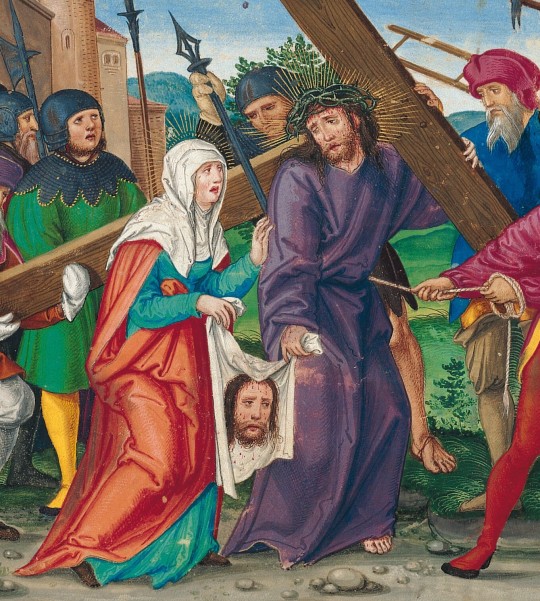
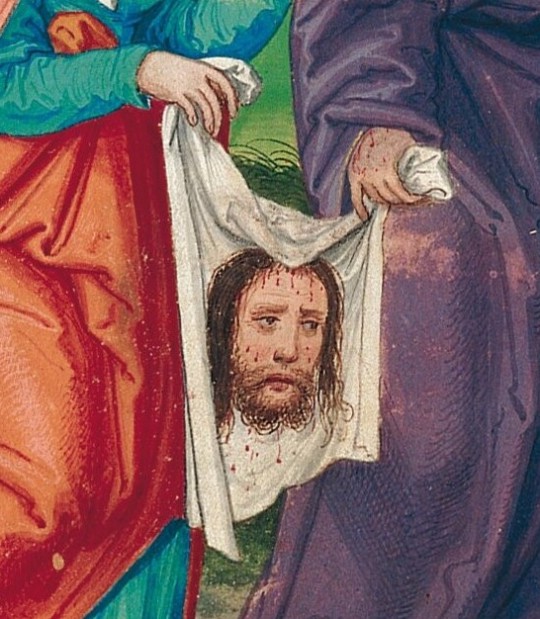
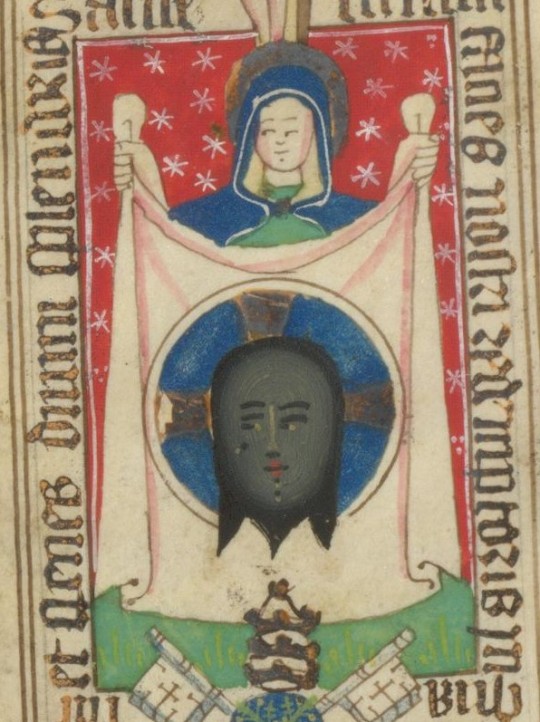
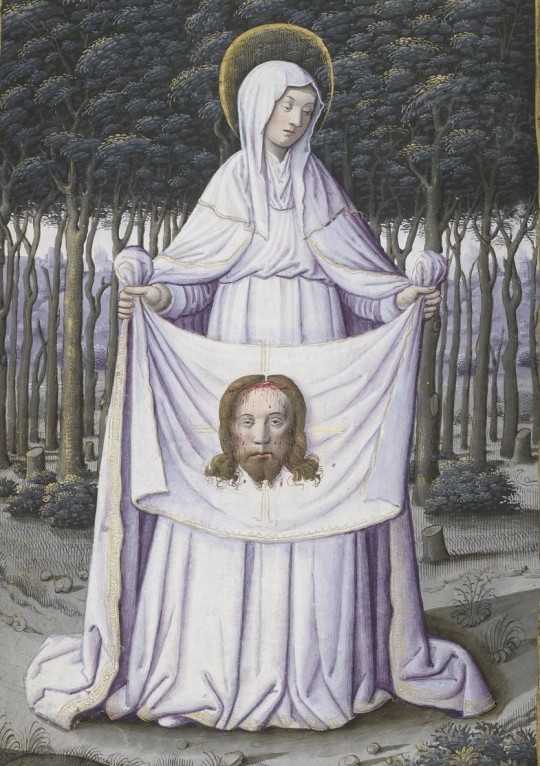
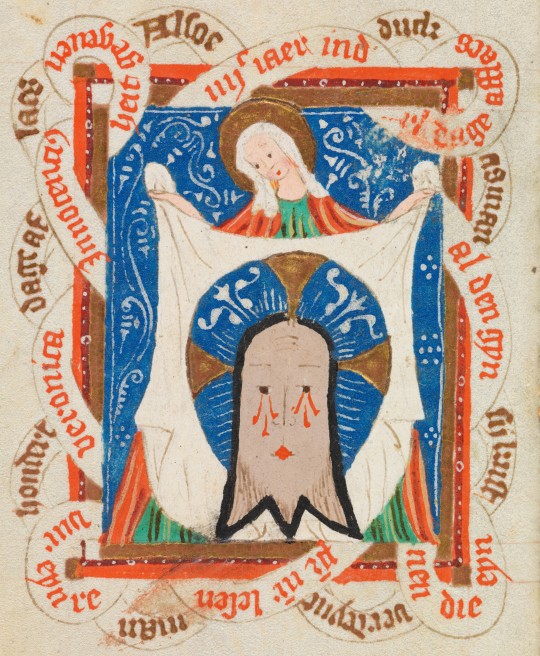
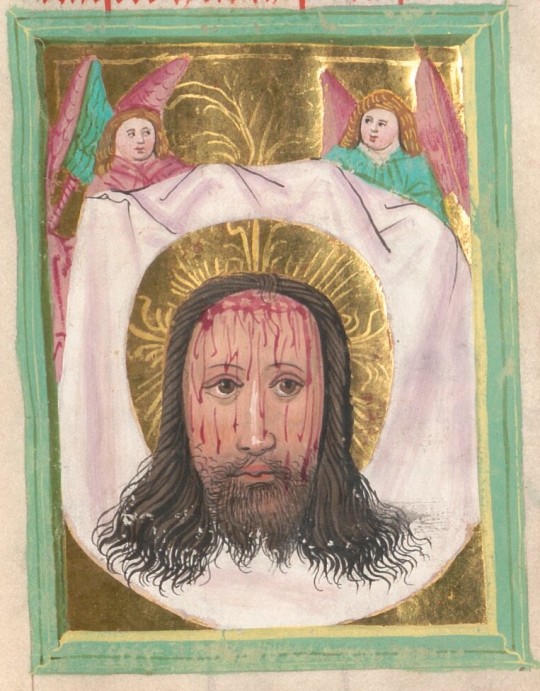
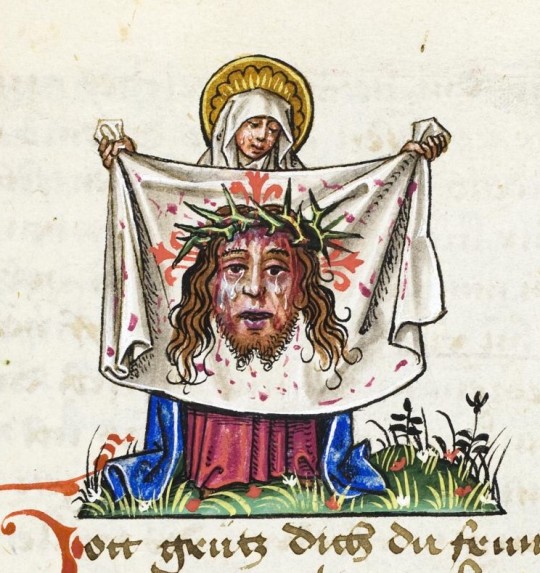
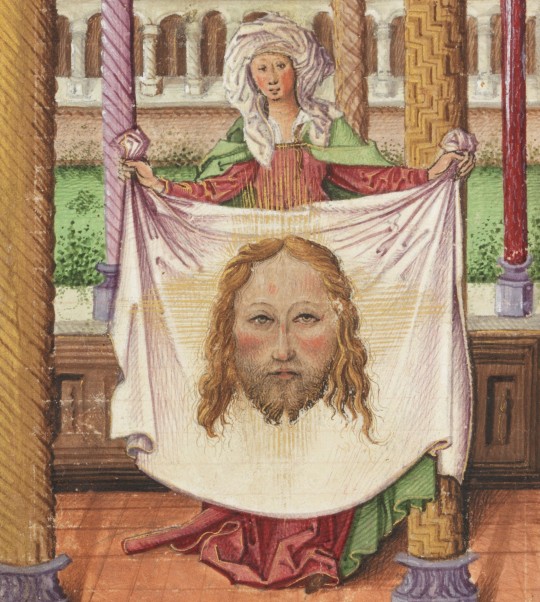
the face of jesus on veronica's veil
15th and 16th century manuscripts illustrations
sources: Munich, BSB, Cgm 8010(2, fol. 68v // Karlsruhe, BLB, Cod. Karlsruhe 439, fol. 1v // Paris, BnF, Latin 1171, fol. 70v // Lausanne, Bibl. cantonale et universitaire, TP 2858, fol. 110v // Munich, BSB, Cgm 7251, fol. 231r // Karlsruhe, BLB, Cod. Donaueschingen 106, fol. 69r // Hermetschwil, Benediktinerinnenkloster, Cod. membr. 35, fol. 73v
#studyblr#history#art#art history#medieval art#christianity#catholicism#anglicanism#lutheranism#languages#linguistics#etymology#names#saint veronica#jesus#eusebius#tiberius#zacchaeus#ecclesiastical history (eusebius)#gospel of nicodemus#stations of the cross#veil of veronica#latin
821 notes
·
View notes
Text

Hl. Basilius der Große
Bischof, Kirchenlehrer ∗ um 330 in Caesarea in Kappadokien, heute Kayseri in der Türkei † 379 in Caesarea
Basilius wurde geboren als Sohn des angesehenen Rhetors Basilius; seine Familie, schon seit Generationen christlich, zeichnete sich durch Glaubenseifer aus. Hervorzuheben sind seine Großmutter Makrina die Ältere, seine Mutter Emmelia, neben ihm selbst sein jüngerer Bruder Gregor von Nyssa und seine Schwester Makrina die Jüngere.
Wie damals üblich, widmete er sich zunächst seiner Ausbildung durch Studien in seiner Heimatstadt sowie in Konstantinopel und Athen, um sich für eine Tätigkeit im öffentlichen Leben vorzubereiten. Bei seinen Studien in Caesarea lernte er Gregor von Nazianz kennen, den er dann in Athen wiedertraf, und schloss mit ihm eine dauerhafte Freundschaft.
Um 356 kehrte Basilius in seine Heimat zurück, um sich als Rhetoriklehrer niederzulassen, doch schon nach kurzer Zeit entschloss er sich, der Welt zu entsagen. Er empfing die Taufe und besuchte, um das Mönchtum kennenzulernen, die berühmtesten Asketen in Syrien, Palästina, Ägypten und Mesopotamien. Darauf zog er sich mit einigen Gleichgesinnten in eine Einöde in der Nähe von Neocaesarea (heute Niksar) am Schwarzen Meer zurück.
Um 358 besuchte ihn dort Gregor von Nazianz, und gemeinsam stellten sie die Philokalia zusammen, eine "Blütenlese" aus Werken des Origenes (um 185-253/54), des bedeutendsten Theologen der griechischen Kirche, und schrieben zusammen zwei Mönchsregeln, die für die Entwicklung und Ausbreitung des Mönchtums im Orient wichtig geworden sind und bis heute Einfluss haben. Um 364 kehrte Basilius nach Caesarea zurück, wurde von Bischof Eusebius zum Priester geweiht und widmete sich neben seiner priesterlichen Tätigkeit auch sozialen Aufgaben; er gründete Pilgerhospize und Häuser für die Armen. 370 wurde Basilius Bischof und damit Metropolit von Kappadokien. Besonders wichtig war Basilius' erfolgreicher Kampf gegen den Arianismus (die Lehre, dass Jesus nicht Gott sei), wobei er unterstützt wurde durch Athanasius, seinen Bruder Gregor von Nyssa und Gregor von Nazianz. Durch Kontakte zu Papst Damasus suchte er Ost- und Westkirche im Kampf gegen den Arianismus, der von Kaiser Valens begünstigt wurde, zusammenzuschließen. Den 381 offenkundig werdenden Zusammenbruch des Arianismus hat Basilius durch seine vermittelnde und ausgleichende Tätigkeit zwischen Ost und West wesentlich vorbereitet.
Im Unterschied zu anderen griechischen Kirchenvätern, die sich nur in der spekulativen Theologie hervortaten, verfolgte Basilius in seinen Schriften auch praktische ethische Anliegen, und wie schon als Priester, kümmerte er sich auch als Bischof um Arme und Bedrängte, wofür er das Vermögen seiner Familie einsetzen konnte.
Basilius ist einer der vier griechischen Kirchenväter (neben Basilius Athanasius der Große, Gregor von Nazianz und Johannes Chrysostomus) und mit seinem jüngeren Bruder Gregor von Nyssa und seinem Freund Gregor von Nazianz einer der drei großen Kappadokier. Im Osten wie im Westen gilt er als Kirchenlehrer. Von ihm sind zahlreiche dogmatische Schriften, Predigten und Briefe erhalten. Die Trinit��tslehre fasste er präziser; mit Athanasius zusammen ist er der Schöpfer der Theologie des Heiligen Geistes.
#Basilius der Große#Bischof#Kirchenlehrer#türkei#saints#athen#griechenland#kirchenvater#saint#saint of the day#heiliger des tages#god#gott#christ#jesus#religion#lord here i am#christianity#faith#glaube#holy#heilig#catholic#roman catholic#catholic posting#catholicism#christentum#katholisch
0 notes
Text
Vorab: Marc Aurel ist bewusst kitschig und schlager-iger ausgefallen, um den Song mit mehr Pathos zu schmücken.
Sicher fragt Ihr Euch, ob es da draussen wirklich Menschen gibt, die während ihrer sexy time über Marcus Aurelius sprechen? Das wissen wir tatsächlich nicht. (Gottseidank!!!)
Was wir aber berichten können, ist diese Mähr, die sich vor vielen Jahren beim Dating zugetragen hat. Ein vermeindlich toller Typ, ebenfalls Künstler und sehr belesen, traf sich einst zu einem skurrilen Blinddate mit einem elektrischen Maidchen. In einer Disco. Doch leider, wie die Dinge so sind, lag sie mit ihm nicht ganz auf einer Wellenlänge. Und so nahm dieser skurrile Abend seinen Lauf: Am Anfang holte er seinen Zeichenblock heraus, sie musste schweigen, bis er sie zu Ende portraitiert hatte, um dann über "Kunst zu diskutieren" (um Saalschutz zu zitieren). Doch leider war die Art von Kunst, für die sich unser dummes, kleines Maidchen interessierte, zu fad, zu pathetisch, zu blumig. Und dann begann er, der stundenlange (!) einseitige Monolog über Marc Aurels Selbstbetrachtungen und die Stoa, immer wieder unterbrochen von der Aufforderung "Du musst unbedingt mehr von Marc Aurel lesen!".
Als dieser dann irgendwann zu Ende war und sie die Chance zur Flucht kommen sah, fragte er schlussendlich: "Gehen wir noch zu mir?"
Das entschiedene und zu schnelle "Nein!" hat er... nicht sehr gut aufgenommen.
Wäre die Antwort ja gewesen, wer weiss, vielleicht hätten wir uns dann noch zu Eusebius von Caesarea steigern können, aber irgendwie...naja.
Es tut mir sehr leid, lieber Aurel, dass Du seither das Running-Gag- Synonym für den absoluter Abturner geworden bist. Du warst bestimmt ein cooler Dude.
#elektrischemaidchen#Musendämmerung#marc aurel#marcus aurelius#horrordates und wo sie zu finden sind#stoa#Spotify
0 notes
Text
A link to my personal reading of the Scriptures
for the 26th of july 2024 with a paired chapter from each Testament (the First & the New Covenant) of the Bible
[the letter of Titus, chapter 2 • the book of Numbers, chapter 29]
along with Today’s reading from the ancient books of Proverbs and Psalms with Proverbs 26 and Psalm 26 coinciding with the day of the month, accompanied by Psalm 37 for the 37th day of Astronomical Summer, and Psalm 58 for day 208 of the year (with the consummate book of 150 Psalms in its 2nd revolution this year)
A post by John Parsons:
“To forgive is to set a prisoner free and discover that the prisoner was you.” - Lewis B. Smedes
====
In the Gates of Repentance it is written: "I hereby forgive all who have hurt me, all who have wronged me, whether deliberately or inadvertently, whether by word or by deed. May no one be punished on my account. And as I forgive and pardon those who have wronged me, may those whom I have harmed forgive me, whether I acted deliberately or inadvertently, whether by word or by deed." Amen...
Yeshua taught us to pray “forgive us as we forgive others," which implies that our forgiveness (of others) is the measure of our own forgiveness. In other words, as we forgive others, so we experience forgiveness ourselves... Forgiveness releases the hurt, the anger, and the disappointment so these feelings do not inwardly consume and exhaust our souls. And yet forgiveness must be self-directed, too, since refusing to forgive yourself denies or negates the forgiveness given from others. Forgiving yourself means admitting that you act just like other people, that you are human, and that you are in need of reconciliation too. We have to move on, past the shame, and to turn back to hope. As a Yiddish proverb puts it, "You are what you are, not what you were..."
It is written, "in many things we offend all," and therefore we must confess our sins one to another to find healing (James 5:16). However the practice of love overlooks a multitude of sins, and if we do not condemn those who offend us, then we will not need to forgive them for their offenses. Walking in God’s love sets us free from the slavery of negative emotions such as resentment, bitterness, anger, unresolved grief, and so on.
I love this affirmation and prayer attributed to Eusebius of Caesarea (c. 263-339 AD): "May I be the friend of that which is eternal and abides. May I never quarrel with those nearest me; and if I do, be reconciled quickly. May I never devise evil against anyone; and if any devise evil against me, may I escape uninjured and without any desire to hurt them. May I love, seek, and attain only that which is good. May I wish for the happiness of all and the misery of none. May I never rejoice in the ill-fortune of one who has wronged me. When I have done or said what is wrong, may I never wait for the rebuke of others, but always rebuke myself until I make amends.”
“May I, to the extent of my ability, give all needful help to my friends and to all who are in want. May I never fail a friend in danger. When visiting those in grief, may I be able by gentle and healing words to soften their pain. May I respect myself. May I always keep tame that which rages within me. May I accustom myself to be gentle, and never be angry with people because of circumstances. May I never discuss who is wicked and what wicked things he has done, but know good men and follow their footsteps."
[ Hebrew for Christians ]
========
Psalm 18:25 reading:
https://hebrew4christians.com/Blessings/Blessing_Cards/psalm18-25-jjp.mp3
Hebrew page:
https://hebrew4christians.com/Blessings/Blessing_Cards/psalm18-25-lesson.pdf

7.25.24 • Facebook
from Today’s email by Israel365
Today’s message (Days of Praise) from the Institute for Creation Research
0 notes
Video
youtube
Church Fathers- 4th Century: Eusebius of Caesarea 260-340AD
0 notes
Text
Saints&Reading: Sunday, June 16, 2024
june 3_june 16
SEVENTH SUNDAY OF PASCHA: THE FATHERS OF THE FIRST ECUMENICAL COUNCIL

On the seventh Sunday of Pascha, we commemorate the holy God-bearing Fathers of the First Ecumenical Council.
The Commemoration of the First Ecumenical Council has been celebrated by the Church of Christ from ancient times. The Lord Jesus Christ left the Church a great promise, “I will build My Church, and the gates of hell shall not prevail against it” (Mt. 16:18). Although the Church of Christ on earth will pass through difficult struggles with the Enemy of salvation, it will emerge victorious. The holy martyrs bore witness to the truth of the Savior’s words, enduring suffering and death for confessing Christ, but the persecutor’s sword is shattered by the Cross of Christ.
Persecution of Christians ceased during the fourth century, but heresies arose within the Church itself. One of the most pernicious of these heresies was Arianism. Arius, a priest of Alexandria, was a man of immense pride and ambition. In denying the divine nature of Jesus Christ and His equality with God the Father, Arius falsely taught that the Savior is not consubstantial with the Father, but is only a created being.
A local Council, convened with Patriarch Alexander of Alexandria presiding, condemned the false teachings of Arius. However, Arius would not submit to the authority of the Church. He wrote to many bishops, denouncing the decrees of the local Council. He spread his false teaching throughout the East, receiving support from certain Eastern bishops.
Investigating these dissentions, the holy emperor Constantine (May 21) consulted Bishop Hosius of Cordova (Aug. 27), who assured him that the heresy of Arius was directed against the most fundamental dogma of Christ’s Church, and so he decided to convene an Ecumenical Council. In the year 325, 318 bishops representing Christian Churches from various lands gathered together at Nicea.
Among the assembled bishops were many confessors who had suffered during the persecutions, and who bore the marks of torture upon their bodies. Also participating in the Council were several great luminaries of the Church: Saint Nicholas, Archbishop of Myra in Lycia (December 6 and May 9), Saint Spyridon, Bishop of Tremithos (December 12), and others venerated by the Church as holy Fathers.
With Patriarch Alexander of Alexandria came his deacon, Athanasius [who later became Patriarch of Alexandria (May 2 and January 18)]. He is called “the Great,” for he was a zealous champion for the purity of Orthodoxy. In the Sixth Ode of the Canon for today’s Feast, he is referred to as “the thirteenth Apostle.”
The emperor Constantine presided over the sessions of the Council. In his speech, responding to the welcome by Bishop Eusebius of Caesarea, he said, “God has helped me cast down the impious might of the persecutors, but more distressful for me than any blood spilled in battle is for a soldier, is the internal strife in the Church of God, for it is more ruinous.”
Arius, with seventeen bishops among his supporters, remained arrogant, but his teaching was repudiated and he was excommunicated from the Church. In his speech, the holy deacon Athanasius conclusively refuted the blasphemous opinions of Arius. The heresiarch Arius is depicted in iconography sitting on Satan’s knees, or in the mouth of the Beast of the Deep (Rev. 13).
The Fathers of the Council declined to accept a Symbol of Faith (Creed) proposed by the Arians. Instead, they affirmed the Orthodox Symbol of Faith. Saint Constantine asked the Council to insert into the text of the Symbol of Faith the word “consubstantial,” which he had heard in the speeches of the bishops. The Fathers of the Council unanimously accepted this suggestion.
In the Nicean Creed, the holy Fathers set forth and confirmed the Apostolic teachings about Christ’s divine nature. The heresy of Arius was exposed and repudiated as an error of haughty reason. After resolving this chief dogmatic question, the Council also issued Twelve Canons on questions of churchly administration and discipline. Also decided was the date for the celebration of Holy Pascha. By decision of the Council, Holy Pascha should not be celebrated by Christians on the same day with the Jewish Passover, but on the first Sunday after the first full moon of the vernal equinox (which occured on March 22 in 325).
HIEROMARTYR LUCIAN , BISHOP OF BEAUVAIS, AND THOSE WITH HIM IN FRANCE (96)

The Hieromartyr Lucian lived in Rome, and his pagan name was Lucius. He was converted to Christ by the Apostle Peter, and was baptized. After Saint Peter’s death, Saint Lucian preached the Gospel in Italy. Saint Dionysius the Areopagite (October 3), a disciple of Saint Paul, arrived in Rome at this time. At the request of Saint Clement, Pope of Rome (November 25), he agreed to preach the Gospel in the West, and gathered companions and helpers for this task. Saint Clement consecrated Saint Lucian a bishop, then sent him off with Saint Dionysius, Saints Marcellinus and Saturninus, the Presbyter Maximian, and the Deacon Julian.
The holy preachers sailed from Italy to Gaul (modern France). Saint Marcellinus and those accompanying him continued on to Spain. Saint Saturninus went to Gaul, and Saint Dionysius and the others went to the region of Paris. From there Saint Lucian went to Belgium with Maximian and Julian.
Saint Lucian’s preaching was very successful. By the power of his words and the example of his life, he converted a large number of pagans to Christianity. Saint Lucian was a strict ascetic, and all day long he ate only a morsel of bread and some water. Towards the converted he was kindly, always joyful and cheerful of face. Soon almost all the settlements of Belgium were converted to Christ.
During this period, the Roman emperor Dometian (81-96) initiated a second persecution against Christians (after that of Nero, 54-68), and he issued an edict prescribing torture and execution for anyone who refused to offer sacrifice to the pagan gods.
Three officials were sent to Belgium to carry out the edict. The Lord revealed to Saint Lucian the ordeal facing him. He gathered the flock together, urging them not to fear threats, tortures or death, and then he gave thanks to God for granting him the possibility of joining the company of the holy martyrs. After praying, Saint Lucian and the priest Maximian and Deacon Julian withdrew to the summit of a hill, where he continued to teach the people who came with him.
Here the soldiers of the emperor came upon the saints and led them away for trial. Saints Maximian and Julian were urged to renounce Christ and offer sacrifice to idols, but both refused and were beheaded.
Then the judge began to interrogate Saint Lucian, accusing him of sorcery and disobedience to the emperor and Senate. The saint replied that he was not a sorcerer, but rather a servant of the true God, the Lord Jesus Christ, and he refused to offer sacrifice to idols made by human hands.
The saint was subjected to fierce beatings, during which he repeated, “Never will I cease to praise Christ, the Son of God, in my heart, and with my lips.” Then the holy martyr was beheaded. A heavenly light shone over his body, and the Voice of the Savior was heard, summoning the valiant sufferer into the heavenly Kingdom to receive the martyr’s crown. By the power of God the saint stood up, picked up his severed head, and crossed over the river. Reaching the burial spot he had chosen, he lay down upon the ground and reposed in peace.
Because of this great miracle about 500 pagans were converted to Christ. Later, a church was built over Saint Lucian’s grave, to which the relics of the martyrs Maximian and Julian were transferred.


ACTS 20:16-18, 28-36
16 For Paul had decided to sail past Ephesus, so that he would not have to spend time in Asia; for he was hurrying to be at Jerusalem, if possible, on the Day of Pentecost. 17 From Miletus he sent to Ephesus and called for the elders of the church. 18 And when they had come to him, he said to them: "You know, from the first day that I came to Asia, in what manner I always lived among you, 28 Therefore take heed to yourselves and to all the flock, among which the Holy Spirit has made you overseers, to shepherd the church of God which He purchased with His own blood. 29 For I know this, that after my departure savage wolves will come in among you, not sparing the flock. 30 Also from among yourselves men will rise up, speaking perverse things, to draw away the disciples after themselves. 31 Therefore watch, and remember that for three years I did not cease to warn everyone night and day with tears. 32 So now, brethren, I commend you to God and to the word of His grace, which is able to build you up and give you an inheritance among all those who are sanctified. 33 I have coveted no one's silver or gold or apparel. 34 Yes, you yourselves know that these hands have provided for my necessities, and for those who were with me. 35 I have shown you in every way, by laboring like this, that you must support the weak. And remember the words of the Lord Jesus, that He said, 'It is more blessed to give than to receive.' 36 And when he had said these things, he knelt down and prayed with them all.
JOHN 17:1-13
1 Jesus spoke these words, lifted up His eyes to heaven, and said: "Father, the hour has come. Glorify Your Son, that Your Son also may glorify You, 2 as You have given Him authority over all flesh, that He should give eternal life to as many as You have given Him. 3 And this is eternal life, that they may know You, the only true God, and Jesus Christ whom You have sent. 4 I have glorified You on the earth. I have finished the work which You have given Me to do. 5 And now, O Father, glorify Me together with Yourself, with the glory which I had with You before the world was. 6 I have manifested Your name to the men whom You have given Me out of the world. They were Yours, You gave them to Me, and they have kept Your word. 7 Now they have known that all things which You have given Me are from You. 8 For I have given to them the words which You have given Me; and they have received them, and have known surely that I came forth from You; and they have believed that You sent Me. 9 I pray for them. I do not pray for the world but for those whom You have given Me, for they are Yours. 10 And all Mine are Yours, and Yours are Mine, and I am glorified in them. 11 Now I am no longer in the world, but these are in the world, and I come to You. Holy Father, keep through Your name those whom You have given Me, that they may be one as We are. 12 While I was with them in the world, I kept them in Your name. Those whom You gave Me I have kept; and none of them is lost except the son of perdition, that the Scripture might be fulfilled. 13 But now I come to You, and these things I speak in the world, that they may have My joy fulfilled in themselves.
#orthodoxy#orthodoxchristianity#easternorthodoxchurch#originofchristianity#spirituality#holyscriptures#gospel#bible#wisdom#faith#saints
1 note
·
View note